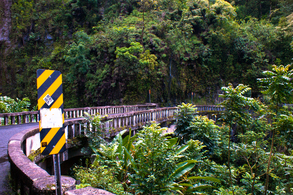 The historic Hana Highway on Maui. Photo credit: wikimedia The historic Hana Highway on Maui. Photo credit: wikimedia Historic bridges along Hana Highway are getting a structural make-over that is expected to take 50 years to complete. The painstaking process of dismantling the bridges and re-constructing them will result in stronger, safer bridges while preserving the historic feel of the area and the bridges themselves. Unfortunately, this process will also have a dramatic impact on the trees along this historic highway. The Chair of TOC’s tree committee is consulting with the project manager, Fung Associates, to ensure that every possible protective measure is taken to keep trees in the ground. As well as to ensure that where tree removals are necessary, replacement trees are planted when construction is complete. Kapi‘olani Boulevard is expecting a new building this summer. Korean condo developer, Samkoo, is constructing a 45-story condo to provide affordable housing in downtown Honolulu. Mahalo to Board member, Steve Mechler, for meeting with developers, architect and landscape architect on March 20th to go over their plans for landscaping and area trees.
A representative of the project said that this is Samkoo’s first building in Hawaii and they wanted to be sure to make a good first impression. The building will provide all affordable housing (1-3 bedrooms) and is designed within the existing zoning limitations. Their proposal calls for widening the public sidewalk and enlarging the planting wells for street trees. This is good because the current planting wells are too narrow, forcing tree roots to bunch up in the planting space and push up surrounding concrete. In the process of constructing the building, two monkeypod trees will be removed. These trees have been hit by cars and restricted by the small planting space, so they are not in good condition. When construction is complete, Samkoo will install two new comparable monkeypod trees nearby -- one immediately across the street and the other in place of the current driveway. They expect to breakdown this summer. 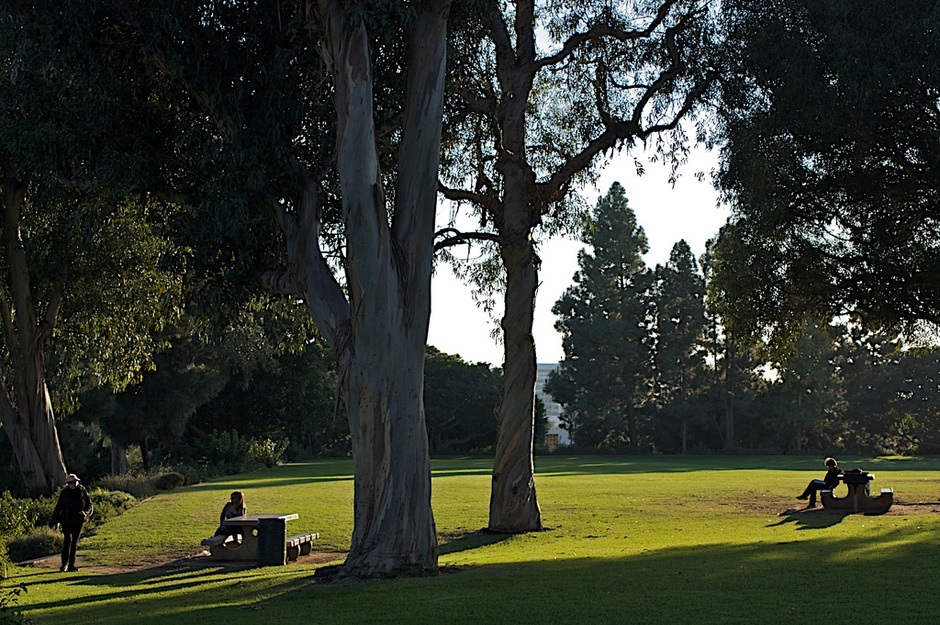 Culvert City in Los Angeles was featured in CityLab's article "You want your city to thrive? Look to its trees". It is a very informative, quick read that highlights the valuable information we can learn about our urban forests through the i-Tree program developed by the USDA. Check it out and find out the economy value of the trees in your yard and throughout your community. The article also highlights the value of old-growth trees to the overall health of cities and the need to have an urban forest master plan to ensure our cities' forests thrive for future generations. Of course, most interesting to us is what CityLab had to say about tree maps -- and it is all good: "Mapping exercises are incredibly useful for urban forestry," says Pamela Palmer, a landscape architect and president of Artecho, the design firm that's working with Culver City on its plan. "They help us fine-tune which trees to plant where and identify areas where a change in planting strategy is needed." Herbertson adds that easy-to-read maps and charts generated from Culver City's tree inventory have been effective tools for generating public interest and feedback, and believes they'll encourage buy-in and approval from the city council. And not to put too fine a point on it, they reminded us that: Increasingly, cities have recognized that trees provide not only environmental benefits and curb appeal—they're also good for business. 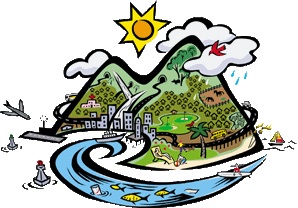 In the Spring, the Land Use Division in Hawaii’s Office of Planning will release a report on the state’s Land Use System. In particular they are focusing on the Land Use Commission’s process for changing the designation of land between urban, agriculture, and conservation. As part of this report, the LUD staff formed a task force and are seeking public comment. Here is a link to the website for the task force. Public comments should be directed to: Rodney Funakoshi at Rodney.Y.Funakoshi(at)dbedt.hawaii.gov or by phone at (808) 587-2885. For our part, TOC is recommending that the Legislature commission a study of Hawaii’s Land Use System -- not just the Land Use Commission proceedings, but the entire system for protecting and using land in Hawaii. This includes the State Plan, the county plans, the Land Use Commission and all of its processes, and the county zoning processes. What works well and what doesn’t? With this information, objectively collected and reported, we will know what changes -- if any -- are needed to meet the best interests of our communities. There is no hard deadline for public comments, but the sooner you jump in, the better. 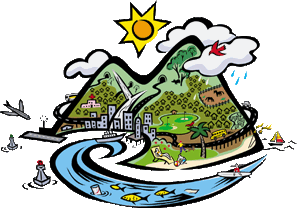 If you care about conservation lands; if you want agricultural lands protected for food production; if you want the right building in the right place, as much as the right tree in the right place... well, then the Office of Planning wants to hear from YOU! The Office of Planning is a state agency charged with providing statewide comprehensive planning. Hawai‘i is recognized as a pioneer in land use and state planning. In 1961, Hawai‘i enacted the first land use law in the U.S., and in 1979 the first state plan law. Learn more about our Office of Planning here. Today, they are conducting a periodic review of a foundational land use law, Hawaii Revised Statute Chapter 205. As part of this review, they are seeking public input from "stakeholders." If you want to see our limited land resources used wisely, then consider yourself a "stakeholder" and invited to attend these listening sessions. Oahu: Nov. 20th at 6 - 8 PM Washington Intermediate School Maui: Nov. 25th at 6 - 8 PM Maui Planning Commission Conference Room in Wailuku Hawaii: Dec. 2nd at 5:30 - 7:30 PM Aupuni Center Conference Room in Hilo Dec. 3rd at 6 - 8 PM Natural Energy Lab Hawaii Conference Room in Kona Kaua'i: Dec. 10th at 6 - 8 PM Kaua'i Planning Commission Conference Room in Lihue Caveats: - We have no idea what they plan to do with our input - We have no control over what they do with our input - They may plan to do nothing with our input - They may proposing sweeping changes to our land use laws (though not this Legislative Session) Long time TOC supporter, Joel Kurokawa (TOC President) is an advocate for The Complete Streets program. Joel and his staff at Ki Concepts invited TOC to participate in the parklet event in Kaimuki on September 19, 2014. Here is an article from the Kokua Line that answered questions on parklet information. Click here to be directed to the Honolulu Clean Cities website. PARK(ing) Day 2014Long time Outdoor Circle supporter Joel Kurokawa and his staff at Ki Concepts held a demonstration to bring awareness of parklets. A parklet is a small area next to the sidewalk that provides amenities and green space in urban communities. Despite being exceptionally hot, Joel and his staff provided information to everyone using the sidewalk fronting Waialae and 12th Ave. The City and County of Honolulu, has adopted an ordinance for parklets, and we look forward to more green space in urban areas. Click here for more information. Photos from PARK(ing) Day 2014!
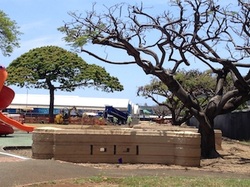 Mother Waldron Park in Kaka'ako, Honolulu Mother Waldron Park in Kaka'ako, Honolulu "OUR VIEW: Hawaii's parks need attention" Editorial from the Honolulu Star-Advertiser on Saturday, Jun 07, 2014 Thanks to the editorial board of the Honolulu Star-Advertiser for highlighting the critical need to invest in our public greenspaces. Below are excerpts of their editorial. Also, big mahalo to the Trust for Public Land for publishing an excellent report ranking Honolulu against other major cities on the quality of its parks. We could not agree more! With your support organizations like The Outdoor Circle can collaborate to improve public park space throughout the Hawaiian Islands! Click here to show your support! "As Oahu's population increases and urban redevelopment crowds more people into the close quarters of high-rise living, creating and preserving vibrant green spaces for recreation and relaxation must be a higher priority. It's much better for the city if those green spaces are on ground level, open to all, rather than private aeries limited to the wealthy denizens of a single luxury building. 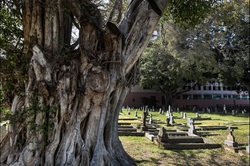 Image by PF Bentley, Civil Beat Image by PF Bentley, Civil Beat By Marti Townsend, Executive Director Two aggressive pests threaten the future of Banyan trees in Hawai‘i. The Lobate Lac Scale, known as the “vampire bug” sucks the life out of Chinese Banyans, native Hibiscus, Koa, and about 300 other tree and plant species. So far this scale is found only on Oahu. The Stem Gall Wasp burrows into branches at the base of each stem making it impossible for Chinese banyans to grow new leaves; it has already invaded O‘ahu, Maui, and Hawai‘i Island. In less than two years, these two aggressive bugs have forced the removal of dozens of banyan trees for safety reasons. Iconic banyan trees have been removed due to these pests at Moanalua Gardens, Thomas Square Park, Kapiolani Park, Washington Place, along the Ala Wai, and the International Marketplace. Chinese banyans at the National Cemetery, UH-Manoa, the Catholic Cemetery on King Street, and Ala Moana Park are infected and undergoing treatment. Despite considerable effort, arborists have yet to find effective treatments for the pests, and in some cases the treatment can be as bad as the disease. While experts continue the search for a cure, The Outdoor Circle is working hard to plant new trees to replace the those being lost to these infestations. It is important for City and State officials, as well as private land-owners to undertake tree-planting with a determination equal to the feracity of these tree-killing bugs. “We can’t just plant any kind of tree where these Exceptional and majestic trees once grew,” said TOC President Alexandra Avery. “We need to have the vision and commitment to plant trees now that have the same potential for greatness as the iconic trees we are now losing. This is the only way to ensure there are still Exceptional Trees in the ground for the future generations of Hawai‘i.” TOC is pleased to report that Washington Place is already preparing to plant trees to replace the 75-year-old Chinese Banyan lost there. Replacement tree plantings and tree relocations are currently being planned for Kapiolani Park and the International Marketplace, while planting plans are being developed for Thomas Square and Ala Moana Park. Learn More: Oahu’s banyan trees under attack, many dying by Denby Fawcett, Civil Beat Tree pest leads to removal of Waikiki Banyan Trees, KITV News You can help! Counter the loss of iconic and Exceptional trees on Oahu and throughout the Hawaiian Islands by becoming a member and supporting The Outdoor Circle’s “Exceptional Tree Initiative.” Click here to make a secure, online donation now. We are committed to planting as many trees with the potential to become truly “Exceptional Trees” as possible. 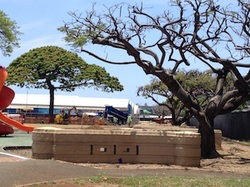 Black tarps currently surround Mother Waldron Park, a registered historic landmark and a beloved urban park in downtown Honolulu. The park is undergoing renovations as part of the mitigations for the newly completed Halekauwila Place. Stanford Carr Development committed to improving the park by planting 15 new trees, including a new Royal Poinciana on the ewa-makai corner of the park, as well as repair the park’s irrigation, re-seed the grassy open area, and renovate the playcourts. Renovations are expected to take several months to complete. The Outdoor Circle will be keeping watch over the renovations, so you can expect project updates to be posted here. 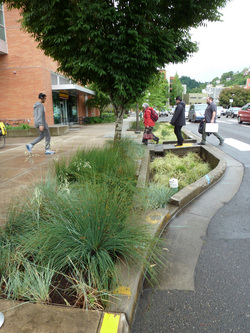 From the Alliance for Community Trees, Seattle, WA (April 2, 2014): University of Washington researcher Kathleen L. Wolf recently made the case in "Stormwater Report" for trees and green infrastructure to both manage stormwater runoff and also offer a host of health benefits. According to Wolf, “Every small patch of nature in cities and built areas can be ‘hyperfunctional’ and provide co-benefits. While performing the primary purpose of stormwater management, green infrastructure also can be designed to augment park systems and provide places of respite, recreation, and delight.“ The article, “Water and Wellness: Green Infrastructure for Health Co-Benefits,” shows that “with careful design, green spaces can manage runoff and provide a range of co-benefits. Integrated planning of green infrastructure and parks systems helps to cost-effectively provide multiple benefits and contributes to more livable communities.” Wolf studies the human dimensions of urban forestry and urban greening. In this roundup of research, she outlines the great opportunity for bridging urban forestry and urban greening into the realms of public works and civil engineering. Wolf cites precedent for this approach. While once land use was segregated, today green infrastructure installations can be integrated with citywide parks and green spaces. And designing green infrastructure for stormwater management as well as co-benefits, particularly human health, can include a broader set of economic returns. “Green infrastructure that provides better human habitat is a win-win for community buy-in.” Wolf reports on a the small but growing sample of evidence about the importance of nearby nature in cities and towns, and the benefits to the environment and human well-being. Here are a few of the benefits she highlights and how they can co-exist with green infrastructure to support stormwater management:
Read the full article, “Water and Wellness: Green Infrastructure for Health Co-Benefits.” Visit Green Cities: Good Health, a University of Washington project which features a collection of more than 2,800 scholarly works, most peer reviewed, which demonstrate how trees, parks, gardens, and natural areas enhance quality of live, and improve human health. Photo credit: Kathleen Wolf 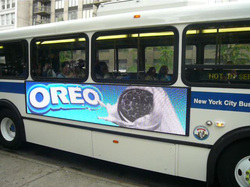 Updated on April 24, 2014: The Budget Committee voted to pass Bill 69 for second reading. The Honolulu City Council plans to hear the bill on May 7th at 10 AM at Honolulu Hale. If you care about this issue, please attend this important hearing. From Kathy, Chair of the Bill 69 Working Group: The City Council’s Budget Committee is once again considering Mayor Caldwell’s proposal to sell advertising on the outside of city buses. Hawaii is too beautiful for bus billboards! Our public bus service should not be held hostage to such an ineffective fundraising scheme. Many of you worked hard back in January to convince the Budget Committee to defer consideration of the proposal for billboards on buses. They did defer the bill. But now that the Council is closer to voting on the final budget and the issue of Bill 69 is back on the agenda for Wednesday, April 23. There will be a hearing that morning, probably at 9 AM If we work hard now, we can kill off this bad idea of bus billboards and stop the Mayor from holding bus service improvements hostage to advertising signs. Here’s what each of us needs to do right now: 1. Prepare and submit testimony for the budget committee meeting on Apr. 23. You can fax your testimony to: or email it to:[email protected],[email protected],[email protected] 2. Make plans to attend the hearing, if at all possible. Bring your friends. We need to have a strong showing at this hearing to demonstrate support for keeping Honolulu billboard free. Click here to sign up to testify. 3. Forward the action alert email from The Outdoor Circle to other friends who share our concern for scenic beauty. If you are a Facebook user, post it on your Facebook page. “Like” The Outdoor Circle for more updates. 4. Call your Council Member to express opposition to Bill 69 even if your member of Council is not on the budget committee. (The Council Members do talk with each other!) Here is a list of all Council members with their phone numbers and their districts. 5. Call the office of each member of the budget committee to express opposition to Bill 69. That’s Chair Ann Kobayashi, Chair; Carol Fukunaga, Joey Manahan, Kimberley Pine, and Stanley Chang. Our message is simple: 1. We cherish the scenic beauty of this island. Allowing advertising signs to mar this beauty is counter to all we hold dear. Rolling billboards are just as bad as the stationary ones The Outdoor Circle got rid of a century ago! 2. The Mayor and City Council must restore the cuts that were made in Oahu’s bus service. But they cannot hold bus service hostage to a plan for billboard advertising that will damage our scenic beauty. They must be creative and find the money somewhere else. 3. Bill 69 creates a false promise of new revenue because of its many legal problems. We already saw how previous efforts to regulate advertising content produced years of expensive litigation around aerial advertising. Bus billboards are a bad idea. The Budget Committee must kill this bill right now. This is the time for all of us to take action. Hawaii is too beautiful for bus billboards. Mahalo for your continuing commitment to keep Oahu free of rolling billboards on our buses. For examples of what Honolulu could be in for if bus billboards are allowed, click here to see TOC's Facebook photo album. 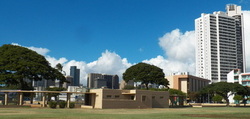 Thanks to our Board Member, Dr. Jeremy Lam, for contributing to this post. The State agency which oversees the development of Kaka'ako has been criticized as being excessively pro-development. Bill 1866, which seeks to improve oversight and transparency at the Hawaii Community Development Authority (HCDA), passed the Hawai'i Legislature this week and was sent to the Governor for his signature. This bill allows greater public input, promotes greater transparency, provides recourse for communities through a contested-case hearing process, ensures more balance to the appointed board, and emphasizes the importance of maintaining height and distance requirements in building projects. The Governor has until April 24th to veto the bill, sign it into law, or allow the bill to become law without his signature. Of the many bills introduced by Representative Scott Saiki to reform the HCDA, this is the only one that survived the legislative process. Representative Saiki told Pacific Business News, "House Bill 1866 will allow us to ‘reboot’ HCDA and allow it to refocus on its mission, provide greater transparency in its operation and decision making, and allow the public to have greater input in its deliberations. At the end of the day, it will help HCDA create a community that is more livable, more productive and that better reflects our island values, lifestyle and sensibilities.” The Outdoor Circle is particularly concerned with ensuring that public greenspace and mauka-to-makai view planes are enhanced -- not undermined -- by the rush to develop the Kaka'ako area. Mother Waldron Park in the heart of Kaka'ako mauka was given to the city in the 1930's specifically to ensure the public had open green space to enjoy, as the downtown financial district expanded eastward. Read TOC's position statement on Kaka'ako: 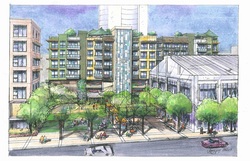 Check out this new article on the challenge of ensuring sufficient open space in the new Kaka'ako: "Open Space in Kaka'ako" by Denby Fawcett in Civil Beat Who knew that one day we would have to make clear that open space means: open to the public, outside, and on the ground. "Open space" that is only accessible to building tenants is the vertical version of a private park. While this might be all fine and good for tenants of the building, it does not ensure a good urban design and sane quality of life for residents. And, it definitely should not count towards the trade-off when government allows developers to build outside basic building standards -- like set-backs. |
Welina!The Greenleaf is the online newsletter and blog of The Outdoor Circle. Here you will find updates on the projects and accomplishments of our many branches throughout the state, as well as programs with statewide impact. Archives
September 2023
Categories
All
|

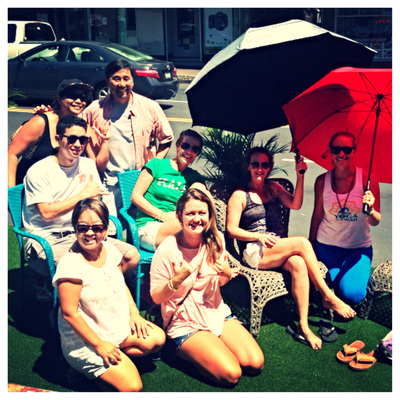
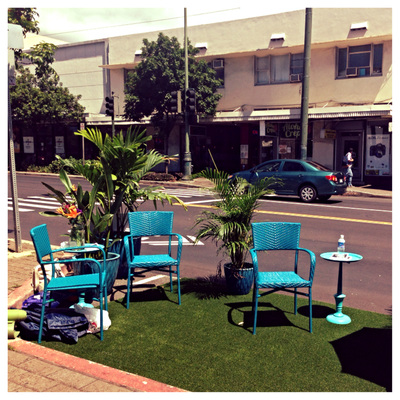
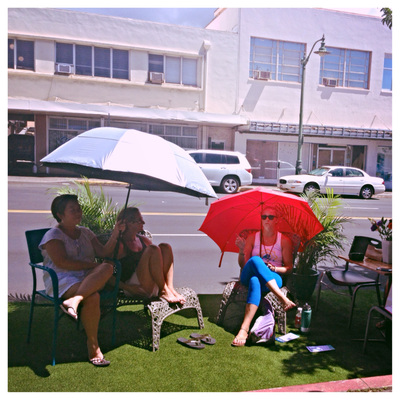
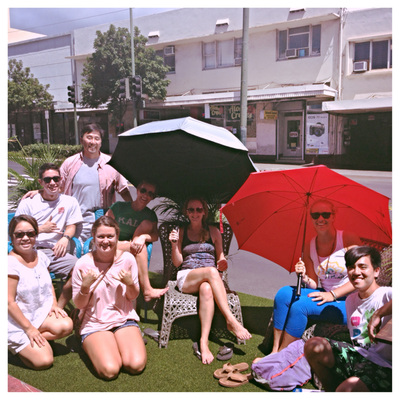
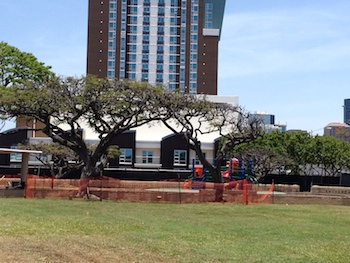
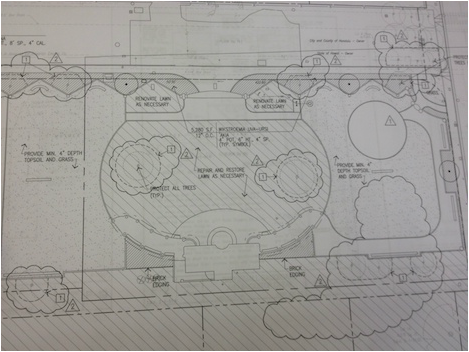

 RSS Feed
RSS Feed